Tourism in Bolivia is developing at a rapid pace and there are all conditions for this. There are attractions for every taste. The natural beauty of South America in Bolivia is complemented by ancient architecture and colorful cities.
The most popular cities in Bolivia are La Paz, Sucre and Potosí. La Paz and Sucre compete for the title of the main city of the country, but the forces are equal and each of them is worth a visit. In the first, you can find a huge market with shamanic devices, and the architecture of Sucre is unparalleled. Bolivia is rich in unique places. These include the Uyuni Salt Flats, Moon Valley, Colorado Lagoon. Here you can see the largest freshwater lake, walk along the most dangerous path in the world, look at the highest statue of Christ. There are many places in Bolivia that you can talk about using superlative adjectives.
Bolivia is home to an incredible number of different animal species. Naturalists and researchers often come here, attracted by national parks and forests. In many places, wild, pristine nature has been preserved here. Therefore, this country more than rewards any traveler who wants to discover the real Bolivia.
What to see in Bolivia?
The most interesting and beautiful places, photos and a brief description.
- City of La Paz
- Uyuni Salt Flats
- Tiwanaku
- Death Road Yungas
- Lake Titicaca
- Moon valley
- City of Sucre
- City of Potosi
- Noel-Kempff-Mercado National Park
- Puma Punku
- Laguna Colorado
- Madidi National Park
- Mount Cerro Rico
- Statue of Cristo de la Concordia
- Jesuit mission to Chiquitos
- Amboro National Park
- Sol de Manana
- The Mercado de Brujas Witch Market
- Arkoiris waterfall
- Oruro Carnival
City of La Paz
It is the de facto capital of Bolivia. The city is home to the majority of government institutions, and together with the suburbs, La Paz ranks first in terms of population. The city is very colorful, combines ancient culture and modern trends. It is located in a stone "cup" of a dried-up river, on the slopes of which new buildings are constantly appearing.
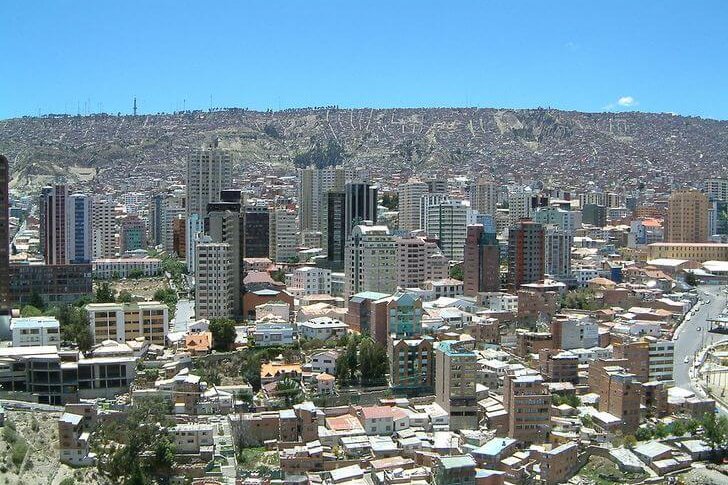
Uyuni Salt Flats
In the south of the Altiplano plain is the largest salt marsh in the world, which was formed after the drying of the lake. This is a snow-white canvas with an area of 10,588 km². Among the attractions of the salt marsh Forest of Stones, consisting of natural stone statues and Fisherman's Island with its huge cacti. And during the rainy season, Uyuni turns into a huge mirror. For tourists, salt hotels were built on the lake.
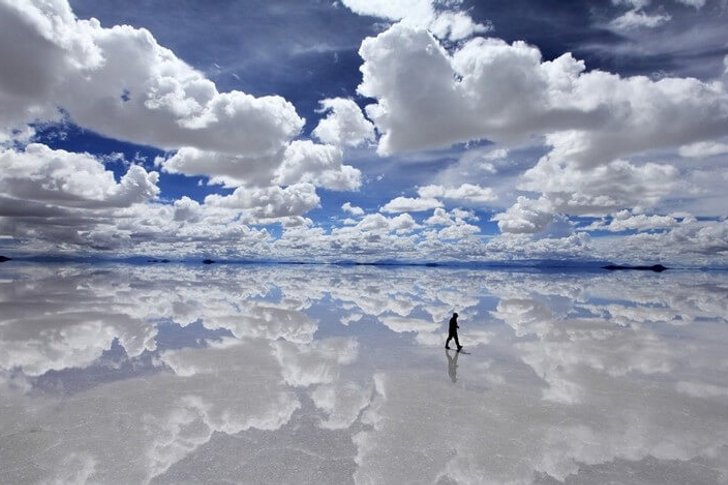
Tiwanaku
Even before the Incas began to develop their empire, another, pre-Inca civilization existed in South America for 400 years. Its center was the city of Tiwanaku. Its area is 2.6 km². During the heyday of civilization, about twenty thousand people lived in it. The size of the stones from which the city is built is surprising. And scientists still cannot decipher the inscriptions on them.
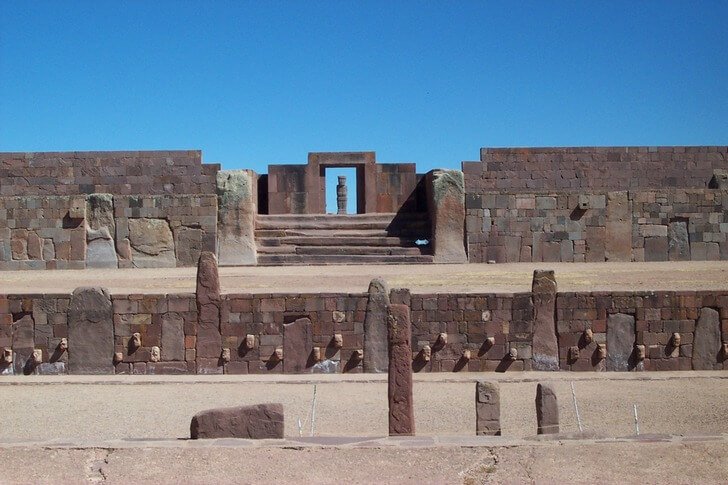
Death Road Yungas
One of the most dangerous roads in the world, which claimed more than one human life. It passes through the Andes and was built in the 1930s by Paraguayan prisoners. The length of the road is almost 70 km., The depth of the abyss is 600 meters. The width of the road barely reaches 3.2 m. On average, about 300 travelers die here and more than 30 cars crash here a year, but there is no other way from Corococo to La Paz.

Lake Titicaca
It is the largest freshwater lake in South America. It is located in the Andes on the border of Peru and Bolivia, at an altitude of 3812 meters, which makes it unique. The area of the lake is 8300 km². It consists of two sub-basins. The maximum depth of the first is 284 m, the second is 40 m. There are many islands on Titicaca, people live on some of them. Isla del Sol is one of the most popular destinations in Bolivia.
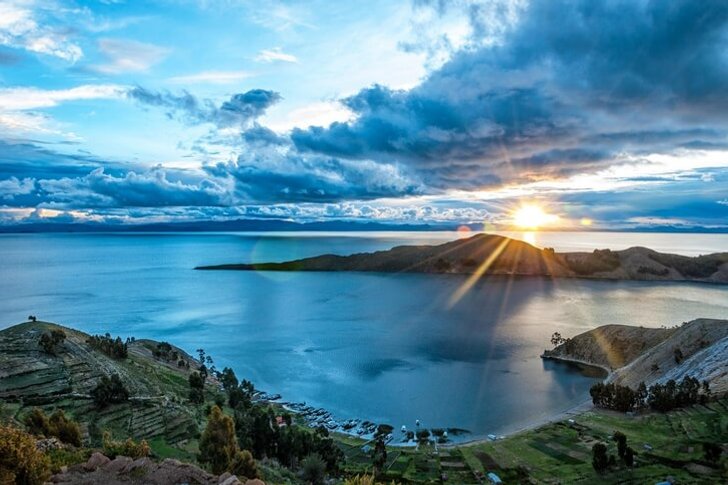
moon valley
In the driest desert on the planet, in some places it has never rained before. An amazing place is located here - Moon Valley. It is also deserted and lifeless, like the whole Atacama, but it attracts tourists very much. With its landscapes and reliefs, it resembles the surface of the moon. Salt hills cast unusual shadows, while columns, rocks and caves create amazing views.
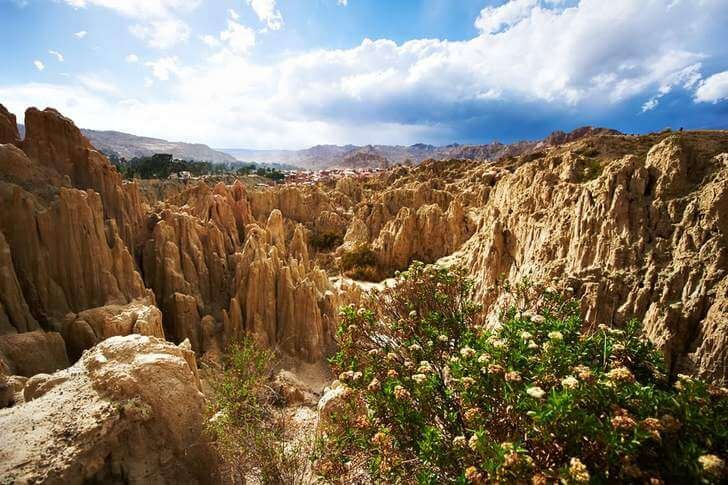
City of Sucre
The official capital of Bolivia, the white city, one of the centers of tourism in the country. Sucre was founded in 1538. It is located in a mountain valley at an altitude of 2750 meters surrounded by the Andes. It can easily make you dizzy, but not from the high pressure, but from the amazing colonial architecture. The city is full of buildings included in the UNESCO heritage list. There are also many museums, cathedrals and churches.
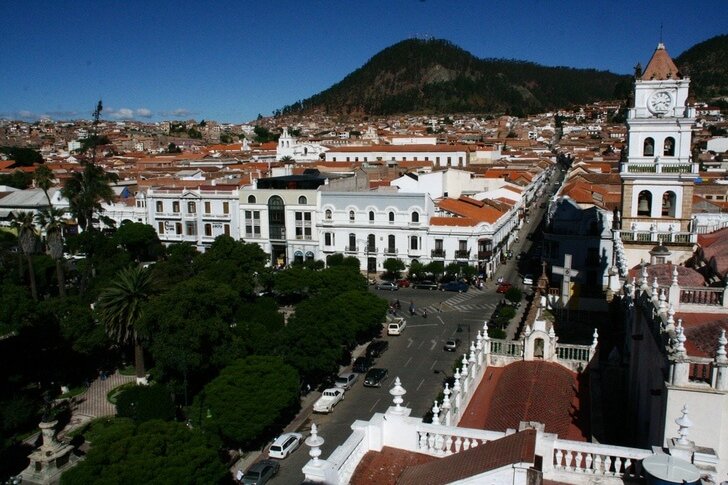
City of Potosi
The Spaniards, who were looking for El Dorado, found Potosi and probably achieved their goal. It is said that the silver mined there would have been enough to build a bridge from Potosí to Madrid. In the 17th century, the city was one of the richest in the world. The population grew, as did the number of victims in the mines. But when the silver reserves ran out, the Spaniards left the city along with all its churches, monasteries and luxurious mansions.
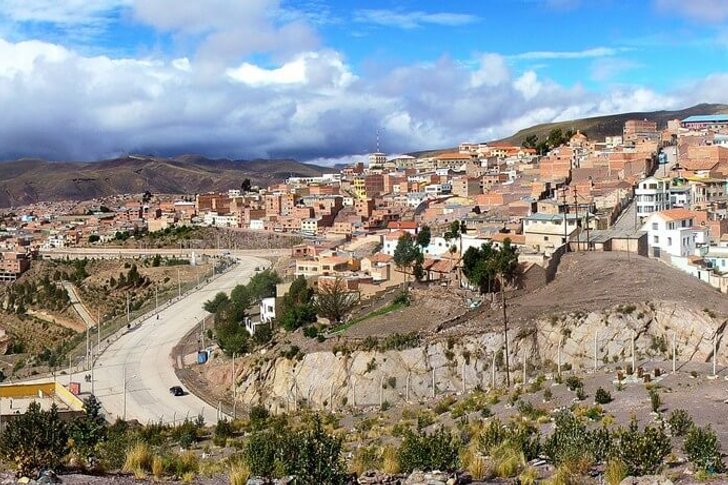
Noel-Kempff-Mercado National Park
In the eastern part of Bolivia, one of the largest parks in the Amazon basin is located. Its area is 15,838 km². This is a very old area, over a billion years old. On its territory there are savannahs, mountain evergreen forests, rivers and waterfalls. The most famous of them is Arcoiris. Its height is 88 meters. More than 250 species of fish, 4000 species of plants and 130 species of mammals live in the national park.

Puma Punku
Not far from the buildings of Tiwanaku is the Puma Punku complex. It consists of huge stone blocks. Translated Puma Punku means "cougar gate". On the territory of the complex with an area of 2 km² there is an embankment lined with megaliths. Their weight starts from 22 and ends with 400 tons. At the same time, the stones fit so well to each other that it is impossible to slip a sheet of paper between them.

Laguna Colorado
On the territory of the Eduardo Avaroa Reserve is the Colorado Lagoon, which is called the Bloody Lagoon. This is a shallow salt lake with an area of 54 km2. During the day and with temperature changes, the color of the lagoon changes from red to purple-brown. The reason for this is sedimentary rocks and algae. The landscape of the lake is complemented by desert rocks. Often the landscape is decorated with flamingos that live in this area.

Madidi National Park
The park is famous for its hiking trails. On its territory there are tropical forests, valleys and mountains. More than a thousand species of animals live here. There are safe zones for tourists, but other parts of the park are extremely dangerous. During the tour to the forest, you can live in ecological villages, catch piranhas, look for monkeys, jaguars, and engage in photo hunting. Going to the pampas, you can see a giant anteater.
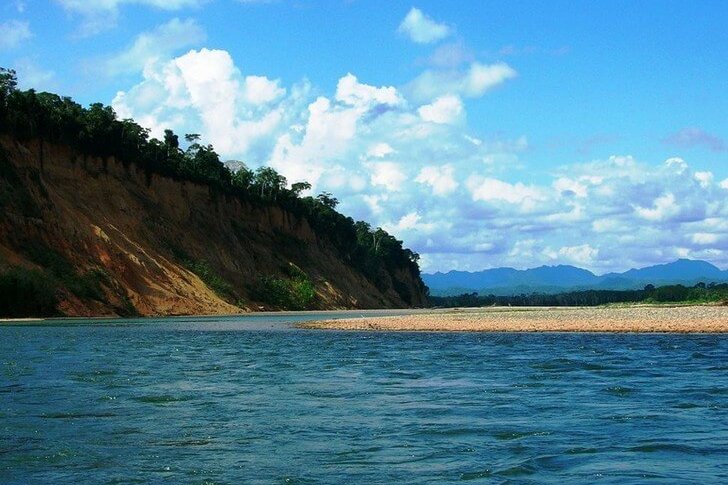
Mount Cerro Rico
This is the mountain that brought extraordinary wealth to Potosi and claimed the lives of thousands of miners. It rises above the city and is known as the "mountain that eats people". Due to the unsafe mining of silver, the mountain is riddled with mines and holes. Its height has decreased by 400 meters, but the miners continue to dig, risking their lives every day. If the mountain collapses, it will bury all of Potosí under it.

Statue of Cristo de la Concordia
The tallest statue of Christ in the Southern Hemisphere is located in the city of Cochabamba. Its height is 34.2 m, and together with the pedestal, the height is 40.4 m. It is built on Mount San Pedro, therefore it is located at an altitude of 2840 m above sea level. The statue has a viewing platform. 1399 steps lead to it. From there, an incredible panorama of the city opens.
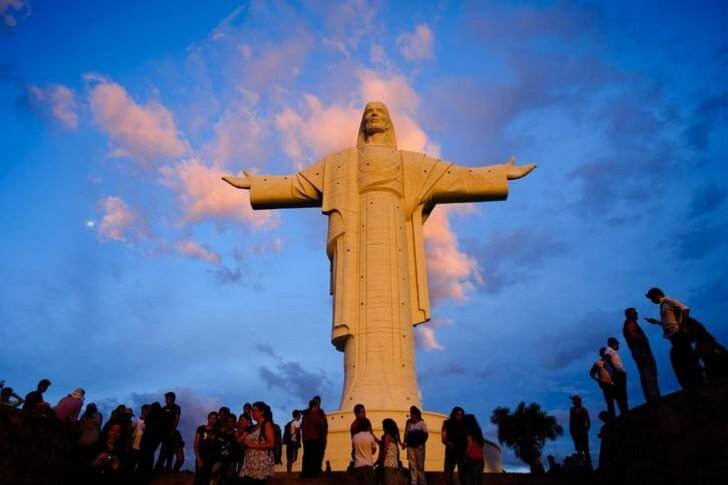
Jesuit mission to Chiquitos
This is a cultural and historical monument, which is located in the Department of Santa Cruz. It consists of six ancient settlements. There are many churches in them, which are the result of the fusion of Indian and European culture. They were built by the Jesuits in the 18th century. The churches have been restored and have been included in the UNESCO heritage list.
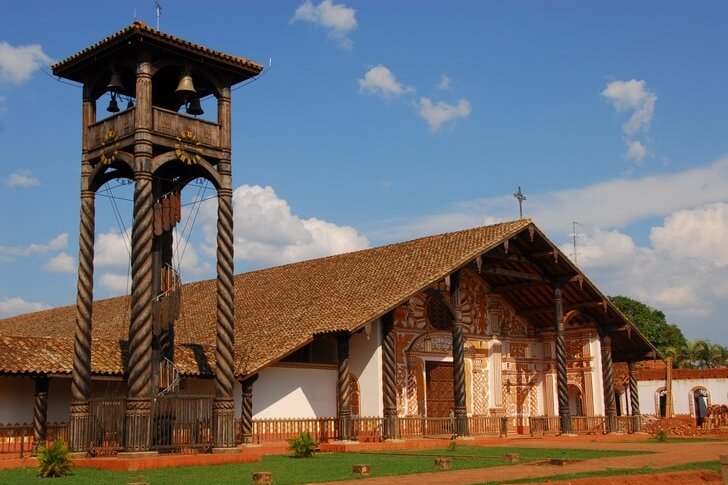
Amboro National Park
The park was founded in 1984 in northern Bolivia. The park has tropical montane forests and valleys. The central part of the park is almost inaccessible to tourists. Untouched nature has been preserved there. In other areas of the park, through which hiking trails pass, there is a very rich flora and fauna. If you climb the mountains, you can see volcanoes, gorges and waterfalls.
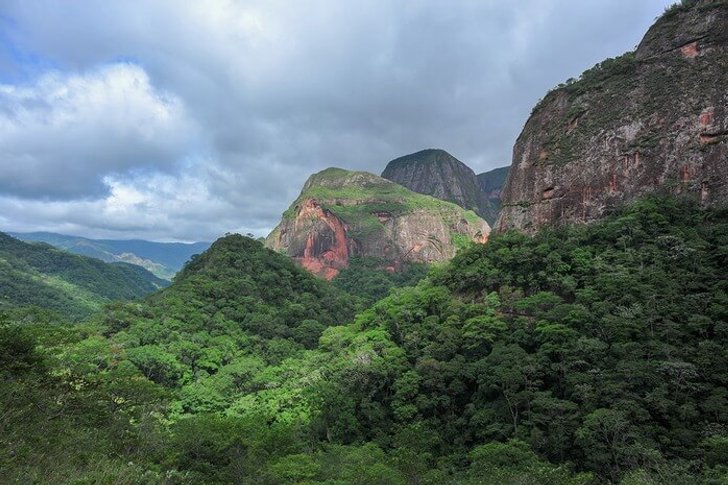
Sol de Manana
These are geothermal springs in the southwest of Bolivia. They occupy an area of 10 km² and are located at an altitude of 4800-5000 m above sea level. This area has sulfur fields, mud lakes, and pools of boiling mud. There is volcanic activity here. After an attempt to establish industry here, holes remained on the territory of the springs. Steam jets come out of them, which reach a height of 50 meters.
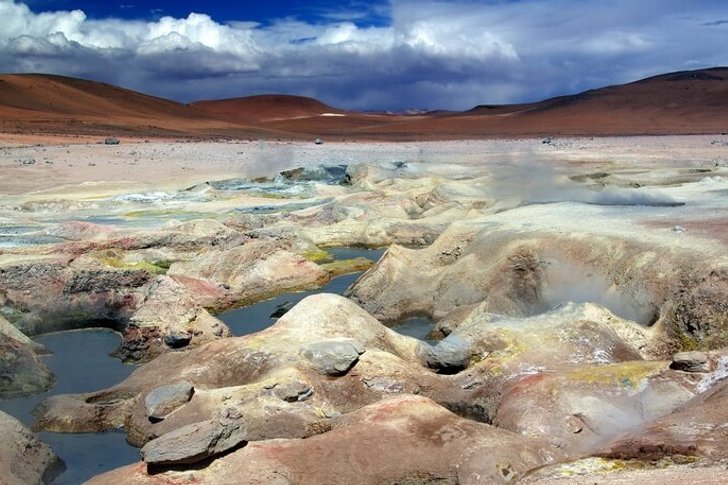
The Mercado de Brujas Witch Market
This is a market in La Paz where shamans and witches act as sellers. They sell everything: love potions, amulets, healing herbs, charms and magical attributes. But even here you can bargain. Also here you can buy a toad to attract wealth or items to communicate with your ancestors. And if this does not fit, there are many jewelry made of silver and wool.
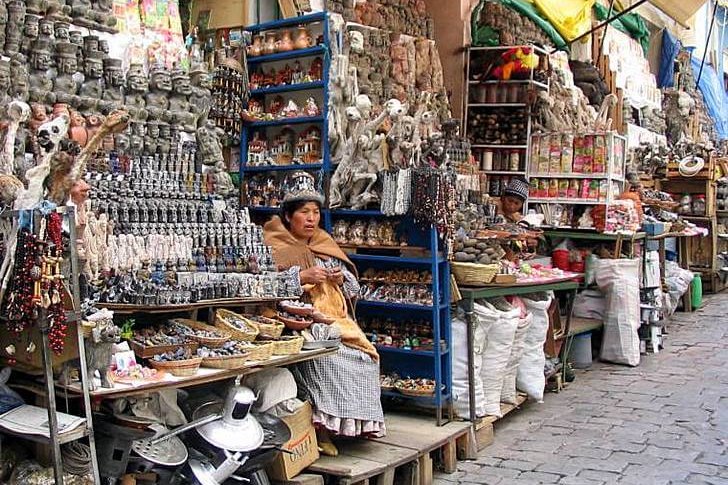
Arkoiris waterfall
The waterfall is located in the Noel-Kempf-Mercado National Nature Park. It was formed on the Pauserna River. Its height is about 90 m, and its width is 50. The name of the waterfall is translated from Spanish as "rainbow". This is because after lunch, the sun's rays fall on the waterfall so that they form a beautiful rainbow. The waterfall can be reached by plane, by river or by walking through the jungle.

Oruro Carnival
It is a masterpiece of the intangible heritage of humanity, included in the UNESCO heritage list. Carnival has become the main cultural event in Bolivia. The holiday is based on the traditions of the indigenous Bolivian people of the Uru. Now the carnival is dedicated to the Virgin Mary of the Presentation. It is celebrated for three days and three nights, during which time 48 different dances are performed. 28 thousand dancers and 10 thousand musicians take part in this.
